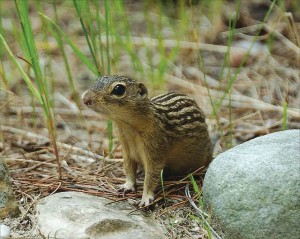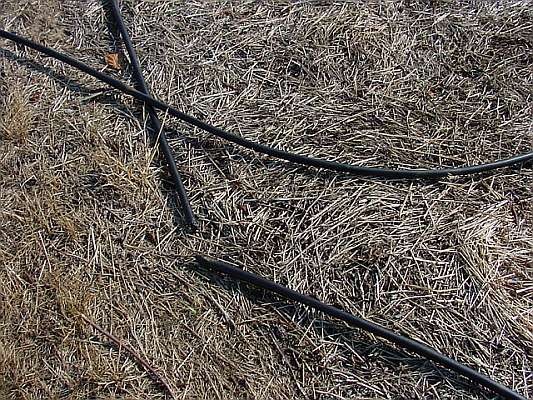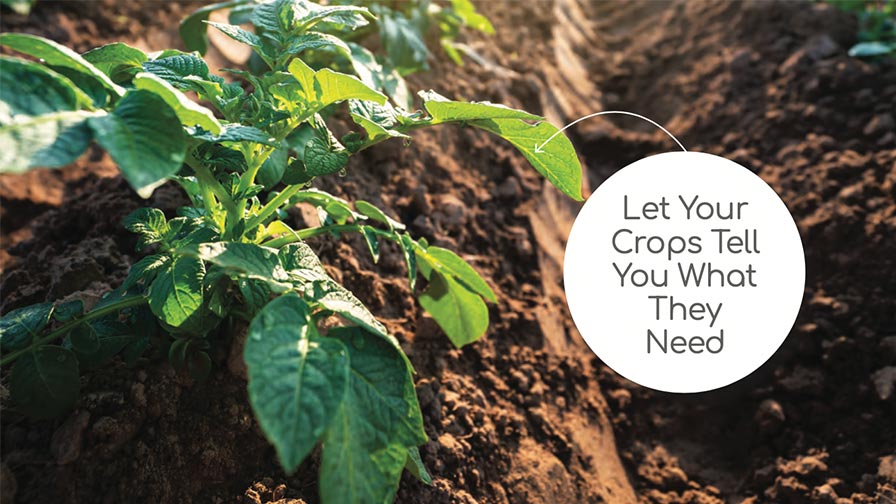Prevent Varmints From Pillaging Your Peach Crop
 One of the realities of life is that in any garden or orchard, eventually insects, pathogens, and animals will show up to claim their share — or at least become obnoxious in some way. I maintain that even Adam and Eve had to use mosquito repellent. As part of my job as an Extension advisor to the fruit industry, I provide help to growers trying to manage various pests, or at least share in their misery.
One of the realities of life is that in any garden or orchard, eventually insects, pathogens, and animals will show up to claim their share — or at least become obnoxious in some way. I maintain that even Adam and Eve had to use mosquito repellent. As part of my job as an Extension advisor to the fruit industry, I provide help to growers trying to manage various pests, or at least share in their misery.
Cute Little Squirrels
The 13-line ground squirrel is a common inhabitant of sandy soils in much of the United States and is a master of finding the fine edge between being obnoxious and being a significant pest. This rodent will dig extensive subway tunnels alongside and underneath newly-planted fruit trees, but I have yet to find evidence that it is actually eating plant roots. So, technically, this ground squirrel is not directly damaging the plant — nevertheless plant roots do not grow well through air pockets.

A 13-line ground squirrel. (Wikimedia commons photo)
However, this squirrel can be a definite direct pest. Ground squirrels have been known to burrow straight tunnels to eat a row of germinating seeds. As a consequence of our battles at the research center, we no longer plant our peach seeds for rootstock in the field, and instead raise our peach seedlings in flats under lights in our barn, and later move them to the field. Baiting seems to be the only reliable way to reduce the populations of this pest.
Soap And Deer
Deer are a major problem in young orchards where they browse on tender buds. Whitetail deer damage seems to be worst in early summer and autumn. Many systems and products have been devised to block or repel deer from orchards. Tall 10-foot fences appear to be the surest method, and also the most expensive. It is still not 100% reliable. Deer will occasionally go through or over fences and sometimes cause more than browsing problems. A few years back, a local grower acquaintance of mine tried to shoo a trespassing deer out through a gate and had to run when the buck lowered his head and charged him.
A less-reliable, but more cost-effective method used by some Midwest growers to repel deer is to hang small motel-type bars of soap in young trees, specifically animal fat-based soap which are more repellent than vegetable oil-type soap. Another technique used with some success is to hang clothes dryer anti-cling sheets in the trees where the smell and the white flutter motion help to discourage deer browsing. The soap works tolerably well, but over time growers find that soap tends to disappear as birds and small animals have developed a taste for tallow-based soap. Also, the odor and repellency of dryer sheets disappears after a few weeks outside.

These trickle lines that have been chewed up by coyotes. (Photo credit: Bill Shane)
Our current favorite method is to combine these two strategies wherein we wrap the soap bar with a dryer sheet and use a hand-held stapler to attach it to a small branch at deer nose level. It is more work to do, but the dryer sheet keeps animals away from the soap and helps to keep the soap from dissolving in rainfall as quickly.
Yippee-Ki-Yi-Yay
Coyotes have become common in many areas of the U.S. where they prey on rabbits, rodents, ground nesting birds, and small domestic animals. Normally, coyotes are not considered to be a nuisance to fruit growers, and can be helpful in reducing wildlife problems. However, recently, coyotes have become pests due to their interest in trickle tubes in commercial fruit orchards. Damage to irrigation systems by coyotes can be fairly significant. The black plastic trickle lines will show bite marks, will be chewed in half, and dragged around the orchard.
Theories on what the coyotes are up to include attacking the hissing tubes because they look and sound like snakes, or perhaps the coyotes are simply looking for water. The search for water theory isn’t the whole answer because coyotes will also mangle dry trickle tubes. Another idea offered by friends is that the young coyotes are teething — chewing the soft tubing feels good on their new teeth. Or perhaps the coyotes, being the curious and intelligent animals they are, are simply jaded and are having fun playing tug-o-war with the tubes.
A worker at my research station tested this idea by putting an old stuffed rabbit toy out in the orchard to keep the coyotes preoccupied. The coyotes shredded the bunny, but also kept on chewing the tubes.
Our practical solution was to put mulch and/or dirt on the tubes to hide them from the bored coyotes. It’s all part of the fun of growing fruit.










